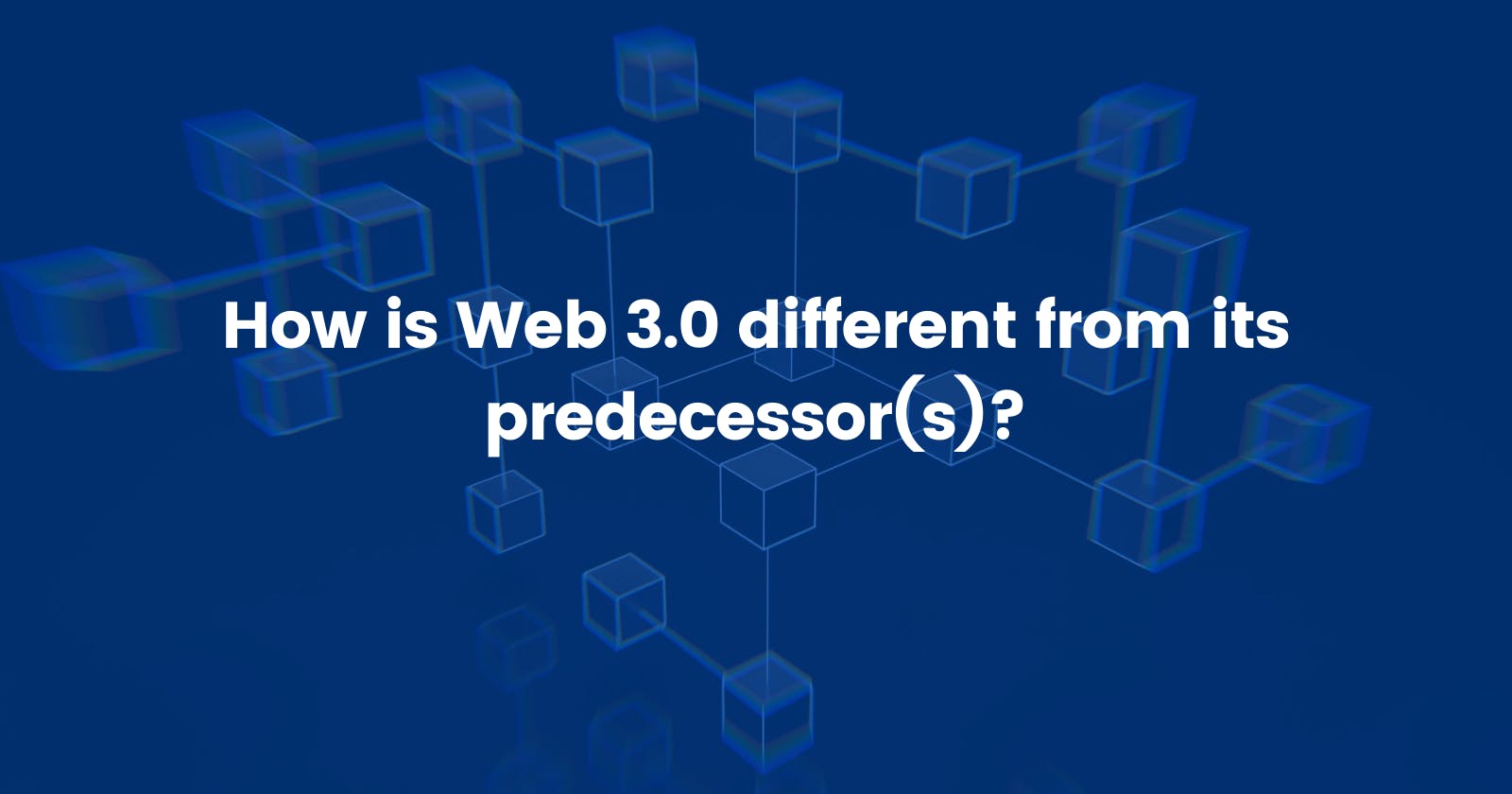If you are a Marvel fan, after watching Spiderman - No Way Home, you'd realise that there are three Spidey universes. We can think of Toby Maguire's universe as Web 1.0, Andrew Garfield's being more advanced as Web 2.0 and Tom Holland's as Web 3.0 each having about 10 years in between for their respective debut to the screens. The point here is that each universe is more advanced and involved than the former with newer technologies, villains etc.
You can think of the different generations of the World Wide Web this way.
However, in this article, we're not going to be talking about Marvel or Spiderman, there are many articles online and videos on YouTube for that purpose, instead, we'll be talking about one of the most recent advancements in technology hitting waves here and there and how this technology is different from it's predecessor.
Let's go back to where it first began....
The beginning - Web 1.0 (1989 - 2004)
Apparently, a man named Tim Berners-Lee was desperate as far back as 1989 and created what is now known to be the World Wide Web.
Creating the web was really an act of desperation, because the situation without it was very difficult when I was working at CERN later. Most of the technology involved in the web, like the hypertext, like the Internet, multi-font text objects, had all been designed already. I just had to put them together. It was a step of generalising, going to a higher level of abstraction, thinking about all the documentation systems out there as being possibly part of a larger imaginary documentation system.
To simply put, Web 1.0 is the first stage of the evolution of websites, it lasted roughly from 1989 to 2004 and it was made up of mostly static (read-only) websites like this one (The first website ever created).
The web's primary goal was to make it simple for internet users to locate data and resources across several systems on the internet as there were no search engines like Google or Bing to access information.
Web 2.0 (2005 - Present)
Web 1.0 introduced the use of HTML (HyperText Markup Language) for defining the structure of websites. Web 2.0 took off of this and introduced interactiveness to websites, this made is possible for non-tech savvy individuals get the best out of information accessed from and uploaded to the internet.
Anyone could now upload and download information like videos, audios, images etc. from the internet. Web 2.0 also saw the rise of web infrastructure giants like YouTube, Facebook and Google facillitating the establishment of more startups and organisations.
However, issues like security and privacy became a problem during this era as personal information are harvested for selfish reasons without consent. Users of the World Wide Web in this era usually do not have full control over their information regarding its storage and usage as most of the information is centralised.
Web 3.0 (The next generation)
As previous generations of the internet are building upon their predecessors, Web 3.0 is rolling out at a fast pace to succeed Web 2.0 solving it's main problem, of centralization. With Web 3.0, data will be networked in a decentralized form, which would be a big leap ahead from our present generation of the internet (Web 2.0), where data is largely housed in centralized repositories.
Web 3.0 mainly focuses on something called the Blockchain, which is a database but without a central authority, hence decentralized. This facilitates building apps that allow anyone to participate and use the internet without the risk of loosing data to random individuals. The introduction of Web 3.0 does not totally eradicate Web 2.0, it only builds upon. For example, the frontend of a Web 2.0 application can remain the same and can be used as a client-end for an application that works and interacts with a different backend like the Blockchain, removing the dependence on a central server.
Mainly, apps that run on Web 3.0 are called dApps, short for Decentralized Applications.
Web 3.0 features different technologies and blockchains that makes building decentralized applications (dApps) easier and faster like Ethereum, Solana, Avalanche, Cosmos etc. each unique in their own way of making Web 3.0 seamless to use and navigate.
This article is just a brief introduction to the different generations of our friendly neighbourhood World Wide Web and how each generation is different from the next. It goes deeper than this, as technical terms and other information are abstracted from this article. For further reading, check out these resources:
This article is a submission as completion of a task given at Blockgames sponsored by Nestcoin and Zuri Team.
